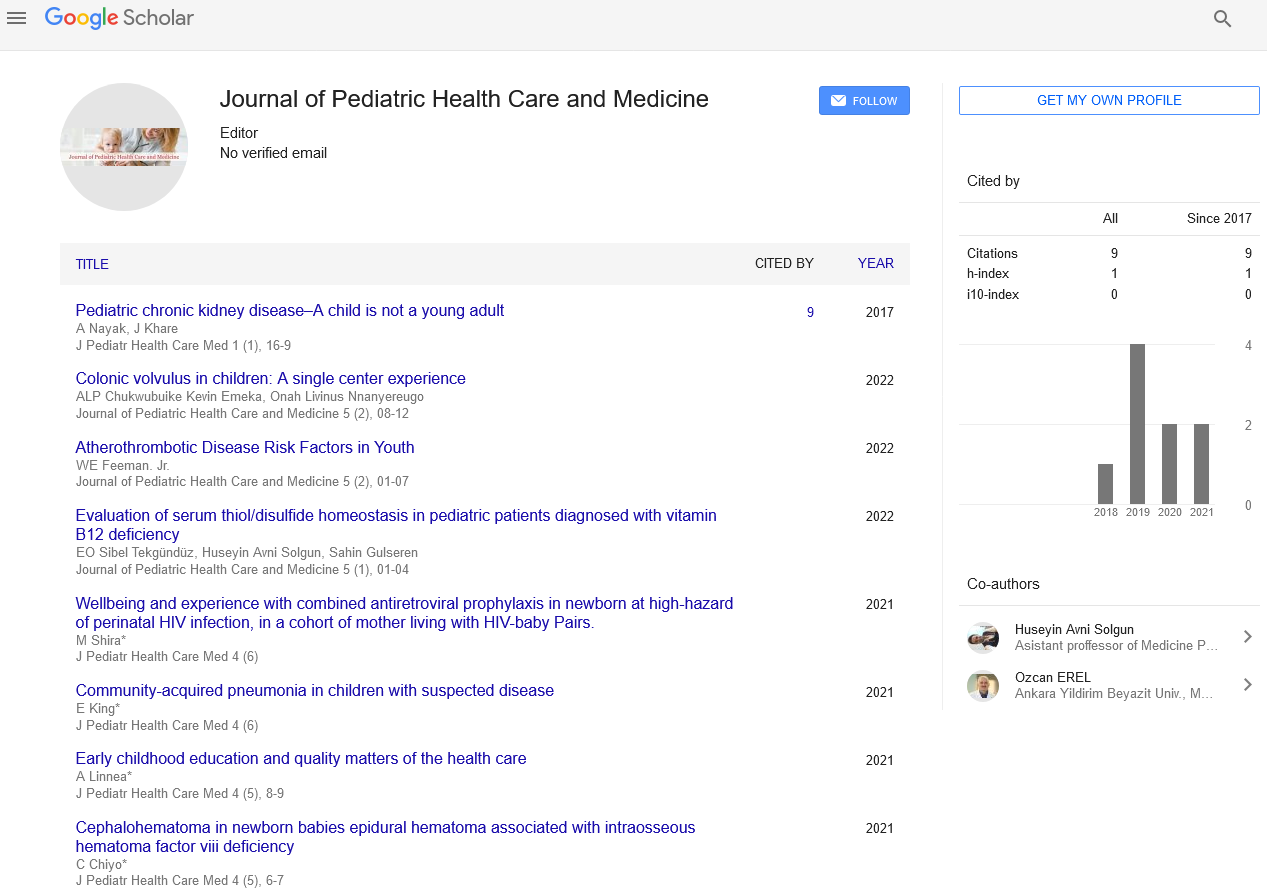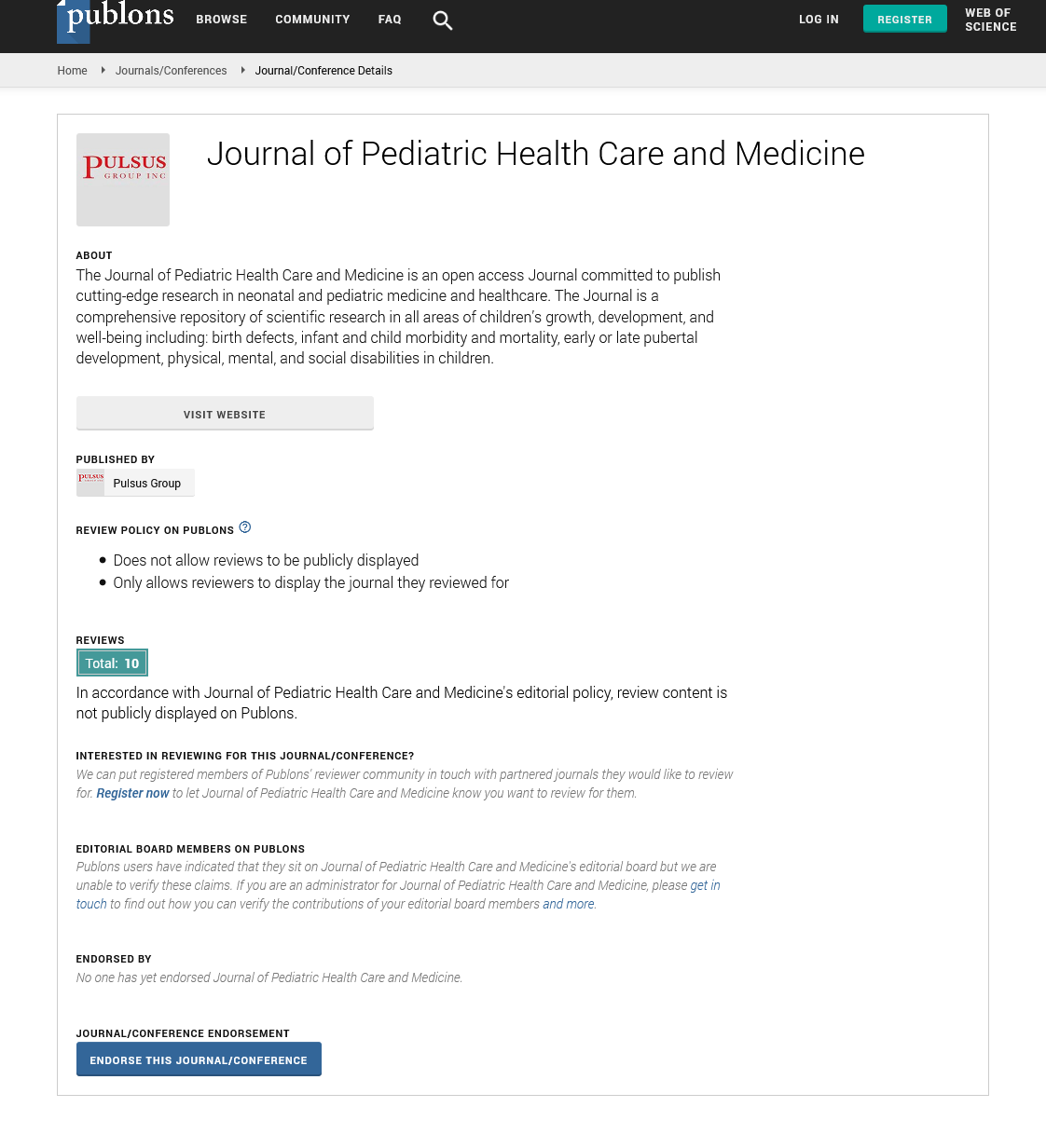Pediatric surgery involves in ultrasound applications of the growing technology
Received: 03-Sep-2021 Accepted Date: Sep 17, 2021; Published: 24-Sep-2021
Citation: Faina J. Pediatric surgery involves in ultrasound applications of the growing technology. J Pediatr Health Care Med. 2021;4(5):11.
This open-access article is distributed under the terms of the Creative Commons Attribution Non-Commercial License (CC BY-NC) (http://creativecommons.org/licenses/by-nc/4.0/), which permits reuse, distribution and reproduction of the article, provided that the original work is properly cited and the reuse is restricted to noncommercial purposes. For commercial reuse, contact reprints@pulsus.com
Abstract
The reason for this review was to decide if the mindfulness and consideration of optional sonographic indications of a ruptured appendix, in mix with an organized assessment as a component of commitment and preparing for sonographers, further developed reference section perception rates and diminished dubious discoveries in kids with suspected intense a ruptured appendix.
INTRODUCTION
The Intussusception is the extending of a proximal section of the gut into a distal portion. It is a generally expected reason for gut obstacle in kids 5 months to 3 years old. The etiology possibly idiopathic or neurotic. Idiopathic intussusception represents 90% of cases and is accepted to be brought about by extended Peyer’s patches Pathological intussusception happens in 2–12% of cases within the sight of a careful lead point. The likelihood of a neurotic lead point increments with age, and the achievement of non-careful decrease is low The old style introductions of intussusception are colicky stomach torment, spewing, red currant jam stools, and unmistakable stomach mass. Visualization is brilliant with right on time location and treatment with radiological decrease. Not with standing, if undiscovered, intussusception might prompt mortality in 2–5 days. In uncommon cases, sphacelation with autoanastomosis of the insides happens with a goal of indications [1].
Ultrasonography techniques
We utilized tests with various frequencies relying upon the objective tissues. Tissue entrance is higher with low recurrence tests, while the infiltration is lower with high-recurrence tests, yet they have better goal. Hence, we utilized low-recurrence tests (2–5 MHz) to assess the profound designs and in large patients and high-recurrence tests (6–13 MHz) for shallow constructions. We washed the sweep head with liquor before use and put sterile gel into a long clean plastic sleeve. We presented the transducer wire over this plastic sleeve and protected it with elastic groups povidone-iodine or sterile gel is utilized as the coupling specialist.
Statistical Analysis
We featured a portion of the strategies wherein intraoperative ultrasonography was utilized. We extricated the information needed for this review from the electronic and paper outlines. The got information included age, the sign of the method, and the employable occasions. Study endpoints were the achievement of utilizing the ultrasound-directed methodology, change to open methodology, and postoperative complexities [2].
Ultrasound and cystic hygroma
Intraoperatively, ultrasonography can be utilized to affirm the preoperative conclusion, guide the careful methodology, and improve dynamic. A few ultrasound-directed strategies have been embraced, for example, hepatic sore planning during resection. Ultrasonography has demonstrated wellbeing, and appropriate ultrasound use in the working room could decrease the mediation time also, work on quiet results. This innovation has changed the usable administration of focal venous catheter addition by decreasing the difficulty rate and the complete number of cannulation preliminaries [3].
Ultrasound-guided central line insertion
Sound waves are reflected more from the strong average due to their thick particles. Strong tissues are echogenic (white), and stringy tissues seem white with shadows, and bones seem white without shadows. Liquids are anechoic (dark), and delicate tissues seem dim. Air reflects sound waves and seems hyperechoic with while lines that forestall perception of more profound designs. These white lines are the resonation curios, and they are exceptionally helpful for the finding of intraperitoneal free air [4].
CONCLUSION
The use of intraoperative ultrasound in pediatric patients is expanding in our organization. The method is safe and could adequately decrease focal line addition confusions and improve cystic hygroma sclerotherapy’s prosperity with a solitary infusion. Ultrasonography ought to be a fundamental piece of inhabitants’ and colleagues preparing in pediatric medical procedure. Intussusception is a typical reason for little inside hindrance in youngsters. A high list of doubt of intussusception ought to be kept up with in youngsters introducing with spewing and wicked stools supplemented by ultrasound to try not to miss this determination. Sphacelation of the intussuscepted inside with auto-anastomosis is an uncommon show of intussusception with an ideal result.
REFERENCES
- Bonasso PC, Dassinger MS, Wyrick DL, et al. Review of bedside surgeonperformed ultrasound in pediatric patients. J Pediatr Surg. 2018;53:2279- 2289.
- Hangiandreou NJ. AAPM/RSNA physics tutorial for residents. Topics in US: Bmode US: basic concepts and new technology. Radiographics. 2003;23:1019–1033.
- Rose JS. Ultrasound physics and knobology. In: Simon BC, Snoey ER, editors. Ultrasound in emergency and ambulatory medicine. St Louis: Mosby-Year book Inc; 1997;10–38.
- Rozycki GS. Surgeon-performed ultrasound: its use in clinical practice. Ann Surg. 1998;228:16–28.






